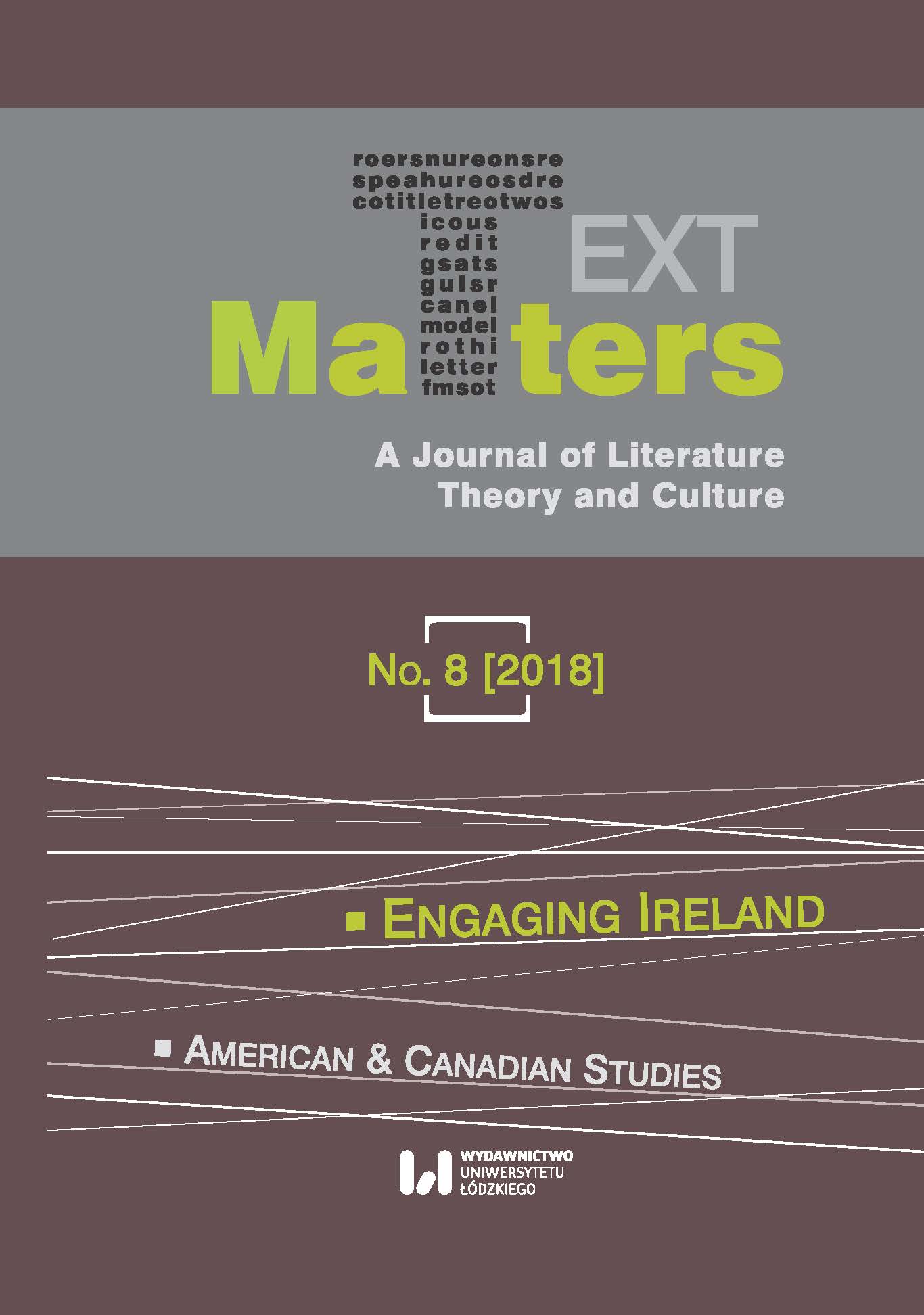The Catch of the Hyperreal: Yossarian and the Ideological Vicissitudes of Hyperreality
DOI:
https://doi.org/10.1515/texmat-2018-0023Keywords:
hyperreality, society of spectacle, business of illusion, antihero, BaudrillardAbstract
Hyperreality is a key term in Jean Baudrillard’s cultural theory, designating a phase in the development of image where it “masks the absence of a profound reality.” The ambiance of Joseph Heller’s Catch-22 (1961) closely corresponds to Baudrillard’s notion of the hyperreal as images persist to precede reality in the fictional world of the novel. Since for Baudrillard each order of simulacra produces a certain mode of ideological discourse that impacts the perception of reality, it is plausible that the characters of this fictional context should be ideologically impacted by the hyperreal discourse. From this vantage point it is possible to have a new critical assessment of Yossarian’s (protagonist) antiheroic stance and study the role of the “business of illusion,” whose ideological edifice is based on the discourse of the hyperreal, on his antiheroic stance and actions. By drawing on Baudrillard’s cultural theory this paper aims to read Heller’s novel as a postmodern allegory of rebellion against the hyperreality of the twentieth-century American life and trace its relevance to modern-day U.S.
Downloads
References
Baudrillard, Jean. America. Trans. Chris Turner. London: Verso, 1989. Print.
Google Scholar
Baudrillard, Jean. Simulacra and Simulation. Trans. Sheila Glaser. Ann Arbor: U of Michigan P, 1994. Print.
Google Scholar
Baudrillard, Jean. The Transparency Of Evil. Trans. James Benedict. London: Verso, 2009. Print.
Google Scholar
Debord, Guy. The Society of the Spectacle. New York: Zone, 1994. Print.
Google Scholar
Hassan, Ihab. “The Antihero in Modern American and British Fiction.” Rumors of Change: Essays in Five Decades. Tuscaloosa: U of Alabama P, 1995. 50–75. Print.
Google Scholar
Hegarty, Paul. “Evil.” The Baudrillard Dictionary. Edinburgh: Edinburgh UP, 2010. 62–64. Print.
Google Scholar
Heller, Joseph. Catch-22. Paris: B. Grasset, 1985. Print.
Google Scholar
Horkheimer, Max, and Theodor W. Adorno. Dialectic of Enlightenment. New York: Herder, 1972. Print.
Google Scholar
Jameson, Fredric. Postmodernism, or, the Cultural Logic of Late Capitalism. Durham: Duke UP, 1991. Print.
Google Scholar
Lane, Richard J. Jean Baudrillard. London: Routledge, 2000. Print.
Google Scholar
McDonald, Paul. Laughing at the Darkness: Postmodernism and Optimism in American Humor. Penrith: Humanities-Ebooks, 2010. Print.
Google Scholar
McDonald, Paul. Reading “Catch-22.” Penrith: Humanities-Ebooks, 2012. Print.
Google Scholar
Pawlett, William. Jean Baudrillard: Against Banality. London: Routledge, 2007. Print.
Google Scholar
Rubenstein, Diane. “America.” The Baudrillard Dictionary. Edinburgh: Edinburgh UP, 2010. 11–13. Print.
Google Scholar
Toffoletti, Kim. Baudrillard Reframed: Interpreting Key Thinkers for the Arts (Contemporary Thinkers Reframed Series). London: Tauris, 2011. Print.
Google Scholar
Woodson, Jon. A Study of Joseph Heller’s “Catch-22”: Going Around Twice. New York: Peter Lang, 2001. Print.
Google Scholar
Zaretsky, Robert. “Trump and the ‘Society of the Spectacle.’” Nytimes.com. The New York Times 20 Feb. 2017. Web. 7 May 2017.
Google Scholar
Žižek, Slavoj. The Fright of Real Tears: Krzysztof Kieślowski between Theory and Post-Theory. London: BFI, 2001. Print.
Google Scholar
Downloads
Published
How to Cite
Issue
Section
License
Copyright (c) 2018 A Journal of Literature, Theory and Culture

This work is licensed under a Creative Commons Attribution-NonCommercial-NoDerivatives 4.0 International License.













